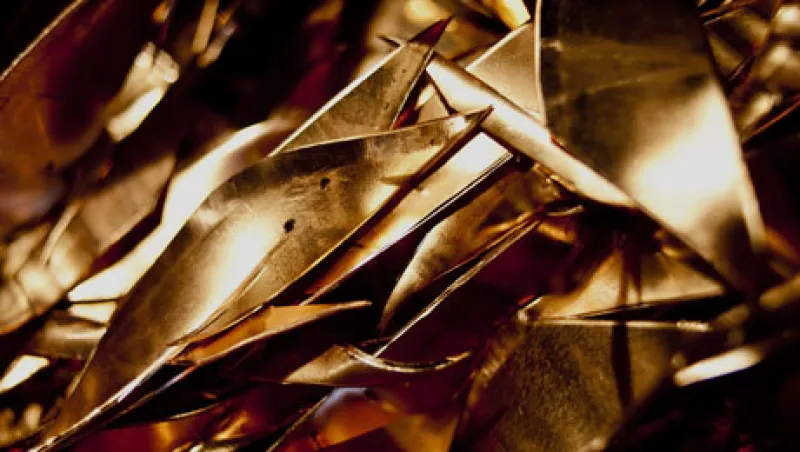As 2012 drew to a close, the SEC finally approved J.P. Morgan’s JPM XF Physical Copper Trust, the first exchange-traded product for physical copper in the U.S. At the same time, the SEC delayed its decision on a very similar Copper Trust from BlackRock’s iShares until February 22.
It’s been a very long process, starting in October 2010, when both JPM and BlackRock filed their original applications with the SEC. Back then, copper was in the first year of what became a three-year-long deficit, with demand exceeding supply, but now the market may be swinging into a surplus.
That leads to the question: While JPM and BlackRock were battling it out with a very dedicated group of opponents — a group of copper fabricators who fear the investment products will engage in hoarding intending to drive prices artificially higher — did they miss the right moment for a launch?
And with plenty of futures-based copper ETFs on the market, will investors be willing to take on the additional costs of storing and insuring physical copper, which is big and bulky unlike gold, silver, platinum and palladium?
There is currently only one physical copper exchange-traded product in the world, offered by ETF Securities of London. Launched in December 2010, the firm’s physical copper product (PHCU.LN) has barely gotten off the ground, with just $16.2 million in assets as of January 15, according to Bloomberg. By comparison, their futures-based copper product (COPA.LN), launched in September 2006, had a healthy $507.9 million in assets on the same date.
When it comes to comparing the two ETFs on returns, the picture is mixed and depends on many market variables, but right now things seem to favor the futures-based copper ETF. COPA, for example, had the better one-year return with -2.15 percent versus -2.91 percent on PHCU as of January 15, according to Bloomberg. And the physical product has also been handicapped by its high costs, including 41 cents per ton per day to store the metal, an expense ratio of 69 basis points and another 12 basis points for insurance. That brings the total cost to an investor to about 2.5 percent, says Ben Johnson, the director of passive-fund research at Morningstar in Chicago. By comparison, investors in the futures-based product pay just an expense ratio of 49 basis points, he notes.
Futures-based products won’t always have a cost advantage. When the futures market is in contango, a situation that occurs when the near-month contract is cheaper than those expiring further out, the ETF has to “roll” its expiring contracts by selling low and buying high, which can be costly. Still, it is a small wonder that ETF Securities’ U.S. subsidiary does not seem to be pressing its case with a basket of six physical industrial metal trusts, including copper, which it filed with the SEC in February of 2011. The public record on the SEC site shows no activity since April of 2011, when ETFS filed its first and only amendment. A company spokesman declined to comment.
Copper is a huge global market, and whether all of the moving parts will combine to produce a surplus this year is still up for debate, but there’s no question that the prolonged deficit has led to greater efforts to mine copper. The bigger question seems to be whether demand will also rise.
Last October the International Copper Study Group, a Lisbon, Portugal–based industry organization, predicted that the market in 2013 would be in surplus by about 400,000 metric tons — a relatively small amount in the context of a global market that the group believes will grow to 21.19 million metric tons next year.
Taking a longer view, in a January 4 report on the 2013 outlook for base metals, Fitch Ratings said, “Additional mine production of about 1 million t [tons] is expected in 2013 and 2014,” citing new projects in Africa’s copper belt, ramped-up production at existing mines and the end of disruptions such as labor strikes. But Fitch also cautions, “Should new supply disappoint while recovery in the industrialized nations strengthens, deficits could persist, requiring higher prices to clear the market.”
On the demand side of the equation, China accounts for a disproportionate amount of global demand — 42.5 percent during the first half of 2012, according to the copper study group.
Martin Arnold, head of research for ETF Securities in London, notes that China’s state metals organization has predicted that Chinese copper demand will rise by more than 5 percent this year. In December Chinese stockpiles were the highest they had been in about seven months, and consequently Chinese copper imports had dropped sharply. But, he adds, “Additional stimulus programs could prompt a Chinese deficit in 2013, which is likely to result in a tighter global market as imports rise.”
On January 15 three-month copper at the London Metal Exchange closed at $8,080 per metric ton, up from $7,994 on December 28.
A spokeswoman for NYSE Arca says that no launch date has been set for JPM’s Copper Trust. She points out that technically, the copper trusts are not ETFs but ETVs, or exchange-traded vehicles, because they will hold the physical commodity. Nevertheless, they will trade side-by-side with the futures-based copper ETFs.
If they get there, that is. Robert Bernstein, the New York City lawyer representing the copper fabricators, isn’t ready to throw in the towel. He says he has filed a Freedom of Information request with the SEC to find out how each of the commissioners voted on the JPM product. And he says he may file an appeal in federal court, challenging the SEC’s conclusion that the JPM product would have “no negative impact on the relatively small market for copper available for immediate delivery represented by copper on warrant in LME warehouses,” he said in an email.






